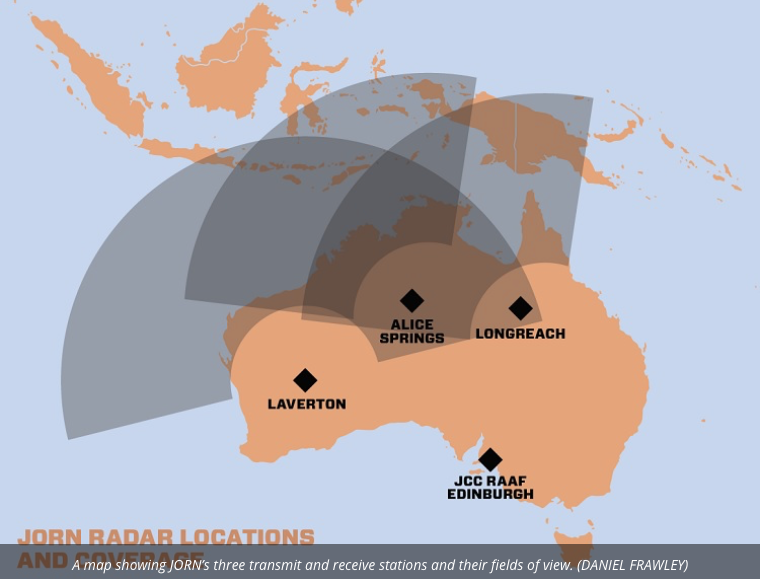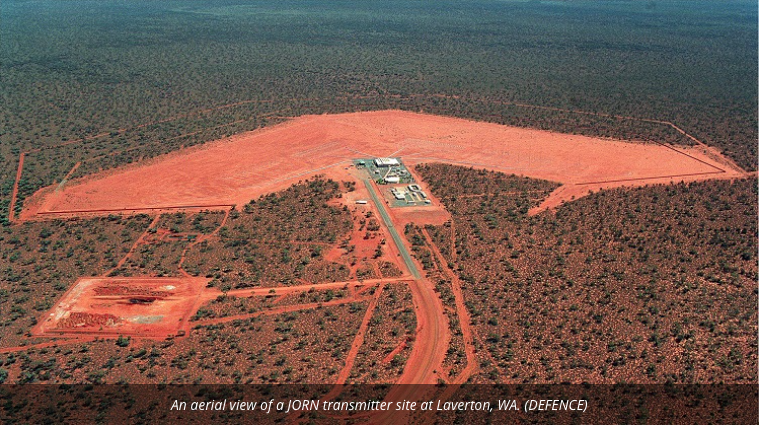The Establishment of a JORN Development Lab
BAE Systems Australia has announced the establishment of a new laboratory to develop high frequency (HF) radar technologies to support Australia’s Jindalee Over the Horizon Radar (JORN) system and future developments.
JORN was developed in the 1980s and, after a protracted and troubled development, has become a world-leading capability that provides a ‘tripwire’ early warning of airborne and marine surface threats to the Australian Defence Force at ranges exceeding 3,000km from Australia’s north coast.
The system has three HF transmit and receive arrays at Alice Springs in the NT, Laverton in Western Australia, and Longreach in Queensland which bounce HF energy off the ionosphere to ‘see’ over the horizon, and a control centre at RAAF Edinburgh near Adelaide.
 Under the $1.2 billion Project AIR 2025 Phase 6, BAE Systems has been engaged to modernise JORN by changing the software architecture to an app based system and adding a digital hardware backbone which will significantly enhance the system’s range capability and the fidelity of the data it gathers.
Under the $1.2 billion Project AIR 2025 Phase 6, BAE Systems has been engaged to modernise JORN by changing the software architecture to an app based system and adding a digital hardware backbone which will significantly enhance the system’s range capability and the fidelity of the data it gathers.
BAE Systems says the new purpose-built lab at Edinburgh parks in Adelaide will have up to 80 specialist and graduate engineers to evolve the “DNA” of JORN and the new HF technologies to be integrated in the upgrade.
“Our investment in this laboratory will ensure that we can significantly improve the radar’s capability and better support this critically important defence asset,” BAE Systems Australia Chief Executive Gabby Costigan said in a statement. “This is a unique facility that will allow the development and testing of specialist equipment to ensure that the decade-long upgrade realises the full potential of JORN beyond 2042.
“The next generation of engineers working on this program have the opportunity to bring new insight and innovation to JORN that will ensure it continue to play a key role in protecting the nation.”
This article was published by Australian Defence Business Review on May 21, 2019.

